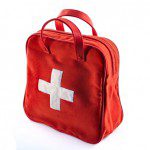Since 2004, our nation has recognized the month of September as “Emergency Preparedness Month.” The Centers for Disease Control (CDC) encourage the public to take time this month to prepare ourselves and our homes in order to be ready in case disaster strikes.
Being prepared falls into four main categories, the first of which is:
Get an Emergency Kit
If disaster strikes your community, you might not have access to food, water, or electricity for some time. By taking time now to prepare emergency water supplies, food supplies and a disaster supplies kit, you can provide for your entire family.
FEMA has recommended the following supplies be a part of your family’s emergency kit:
Emergency Supplies:
Water, food, and clean air are important things to have if an emergency happens. Each family or individual’s kit should be customized to meet specific needs, such as medications and infant formula. It should also be customized to include important family documents.
Recommended Supplies to Include in a Basic Kit:
– Water, one gallon of water per person per day, for drinking and sanitation – Food, at least a three-day supply of non-perishable food
– Battery-powered radio and a NOAA Weather Radio with tone alert, and extra batteries for both
– Flashlight and extra batteries
– First Aid kit
– Whistle to signal for help
– Infant formula and diapers, if you have an infant
– Moist towelettes, garbage bags and plastic ties for personal sanitation
– Dust mask or cotton t-shirt, to help filter the air
– Plastic sheeting and duct tape to shelter-in-place
– Wrench or pliers to turn off utilities
– Can opener for food (if kit contains canned food)
Clothing and Bedding:
If you live in a cold weather climate, you must think about warmth. It is possible that the power will be out and you will not have heat. Rethink your clothing and bedding supplies to account for growing children and other family changes. One complete change of warm clothing and shoes per person, including:
– A jacket or coat
– Long pants
– A long sleeve shirt
– Sturdy shoes
– A hat and gloves
– A sleeping bag or warm blanket for each person
Family Supply List (continued):
Below are some other items for your family to consider adding to its supply kit. Some of these items, especially those marked with a * can be dangerous, so please have an adult collect these supplies.
– Emergency reference materials such as a first aid book or a print out of the information on www.ready.gov
– Rain gear
– Mess kits, paper cups, plates and plastic utensils
– Cash or traveler’s checks, change
– Paper towels
– Fire Extinguisher
– Tent
– Compass
– Matches in a waterproof container*
– Signal flare*
– Paper, pencil
– Personal hygiene items including feminine supplies
– Disinfectant*
– Household chlorine bleach* – You can use bleach as a disinfectant (diluted nine parts water to one part bleach), or in an emergency you can also use it to treat water. Use 16 drops of regular household liquid bleach per gallon of water. Do not use scented, color safe or bleaches with added cleaners.
– Medicine dropper
– Important Family Documents such as copies of insurance policies, identification and bank account records in a waterproof, portable container
* These materials could be dangerous and should be gathered by an adult.
Next week’s blog will focus on the next step of Emergency Preparedness Planning:
Make an Emergency Plan
